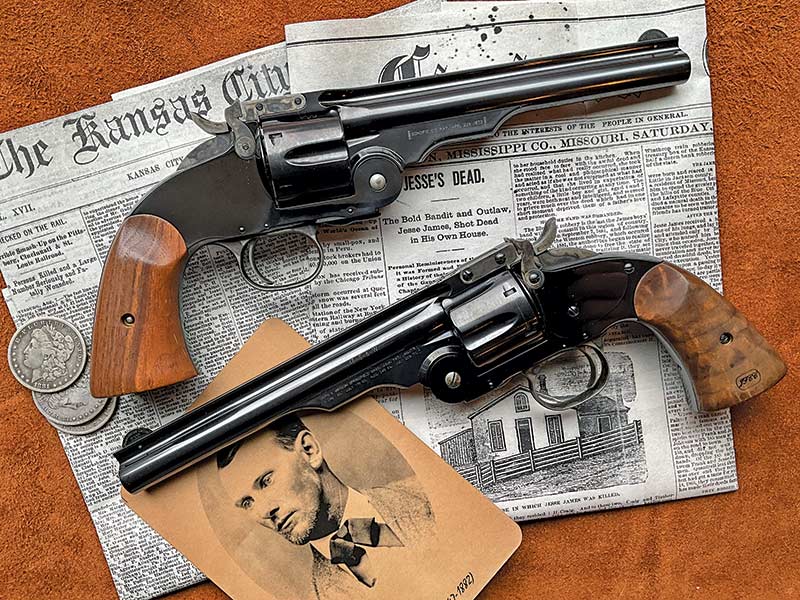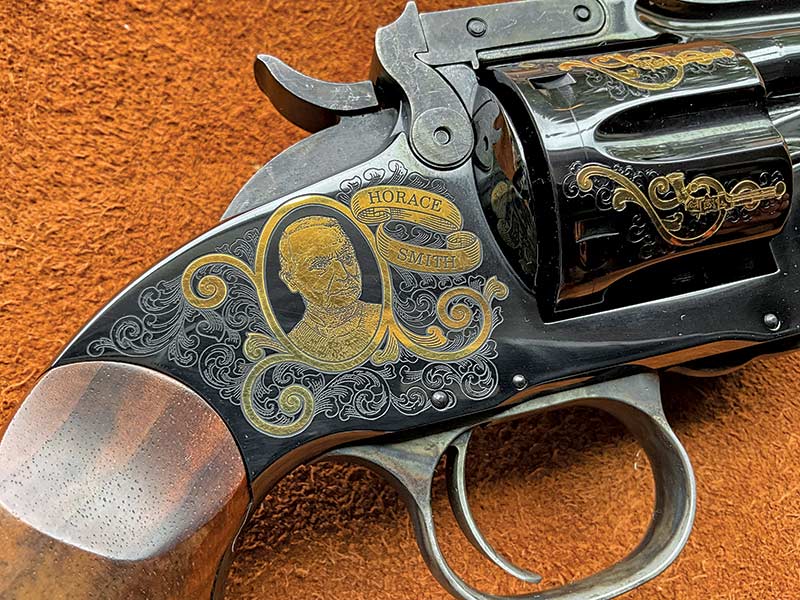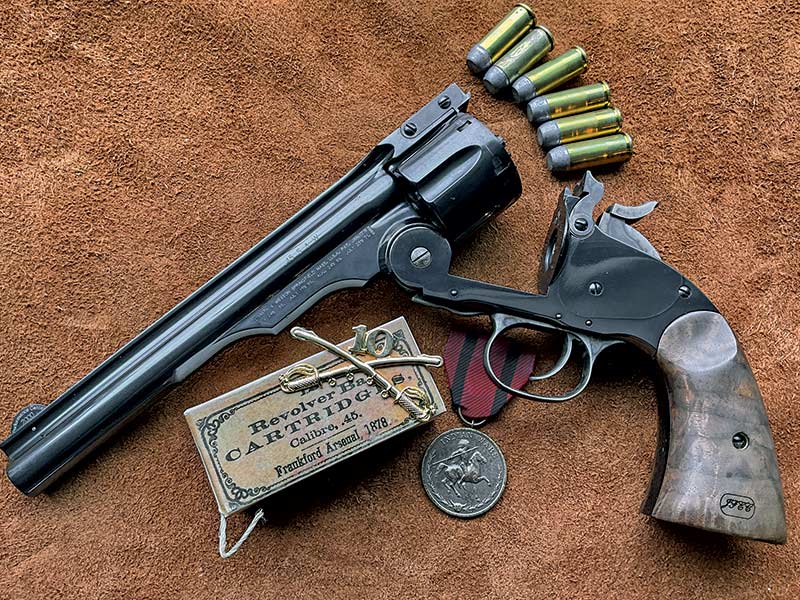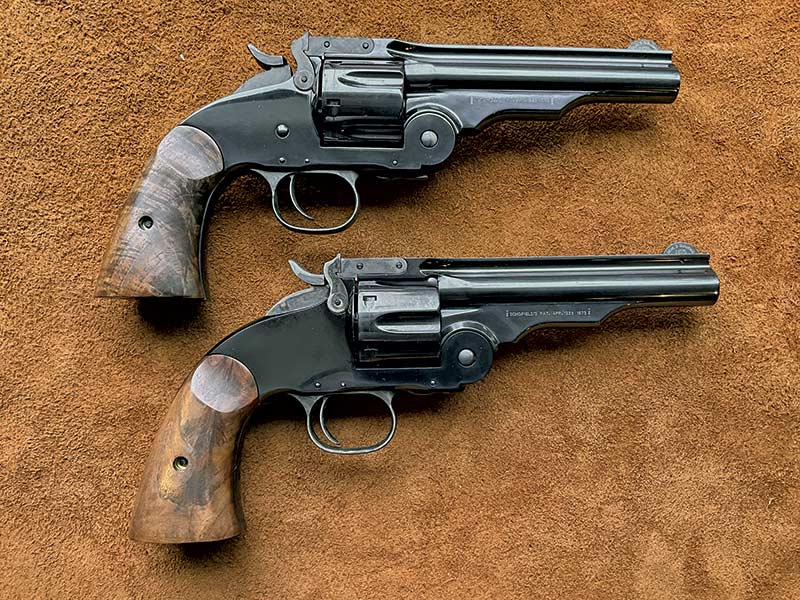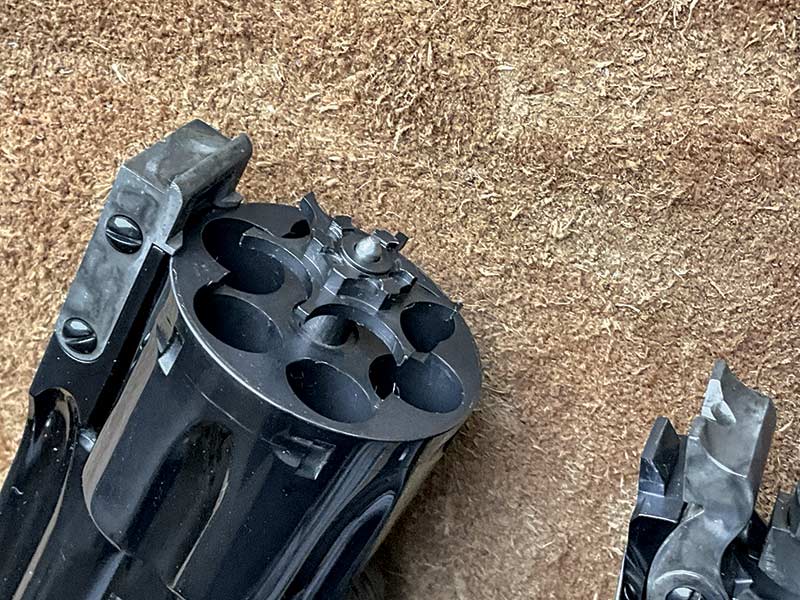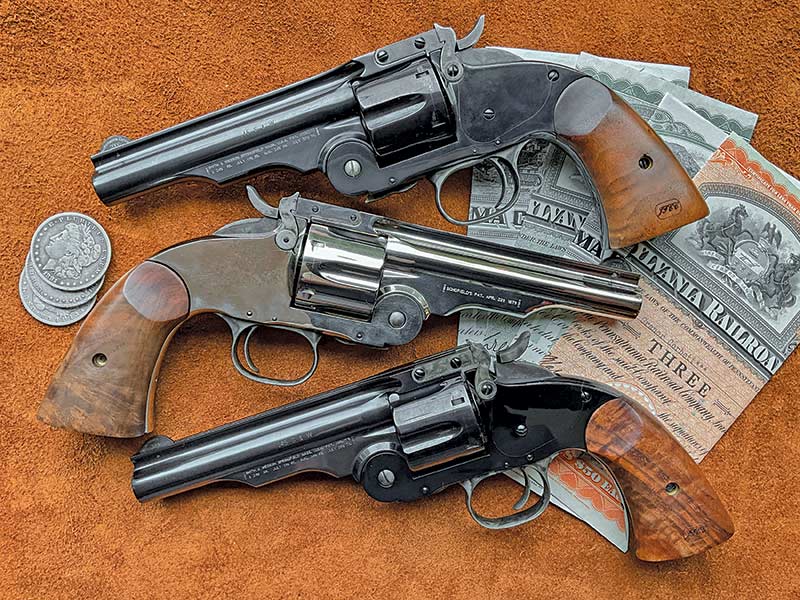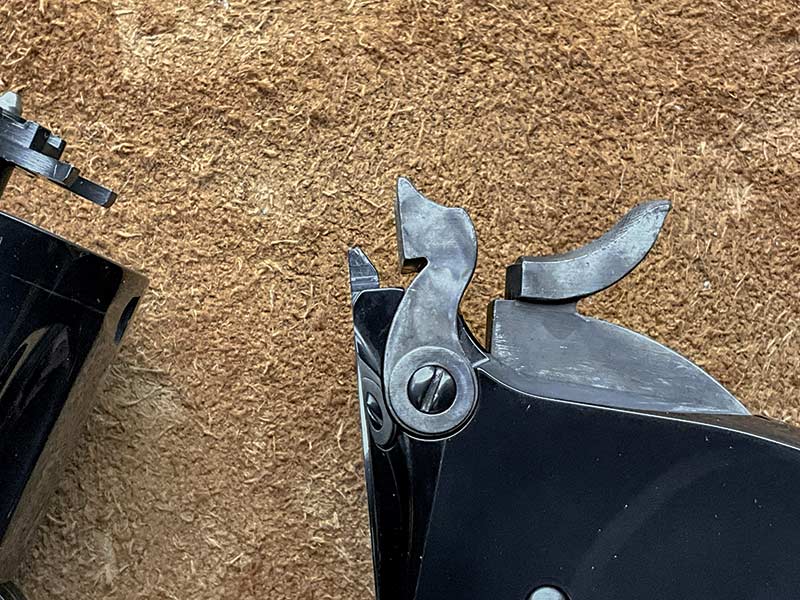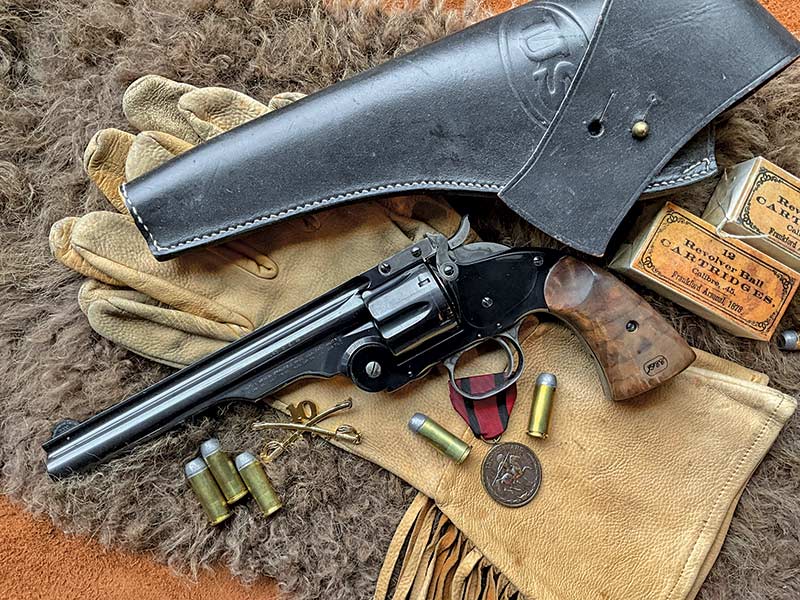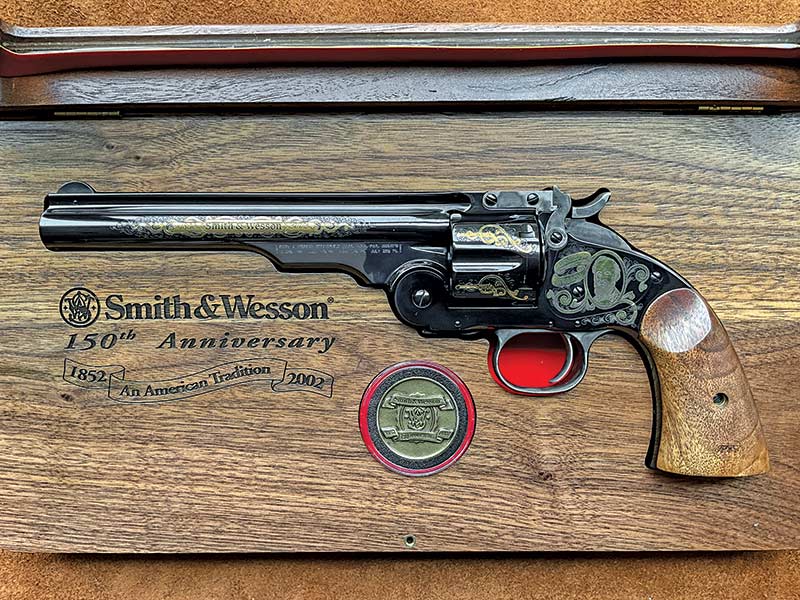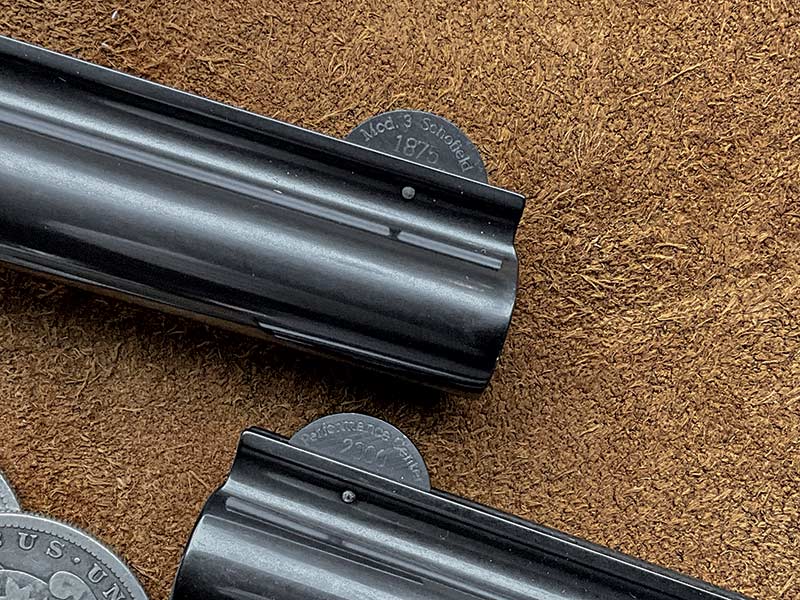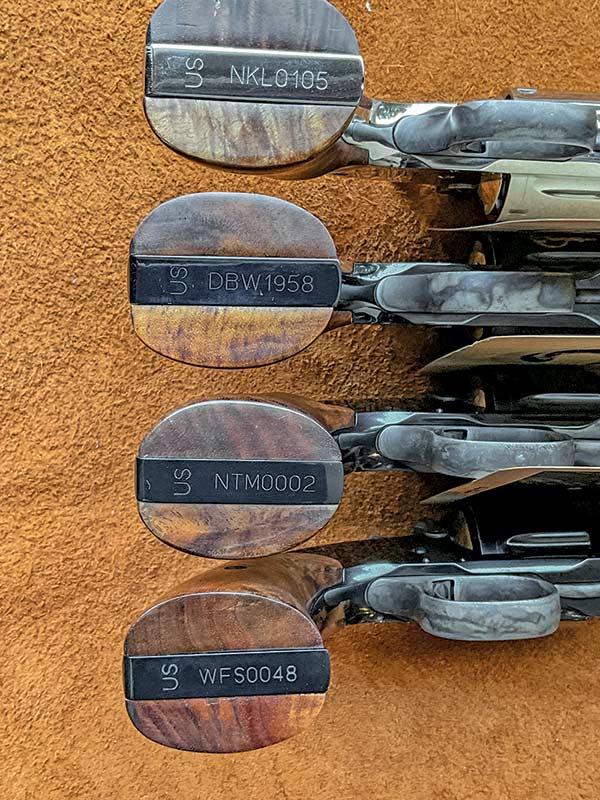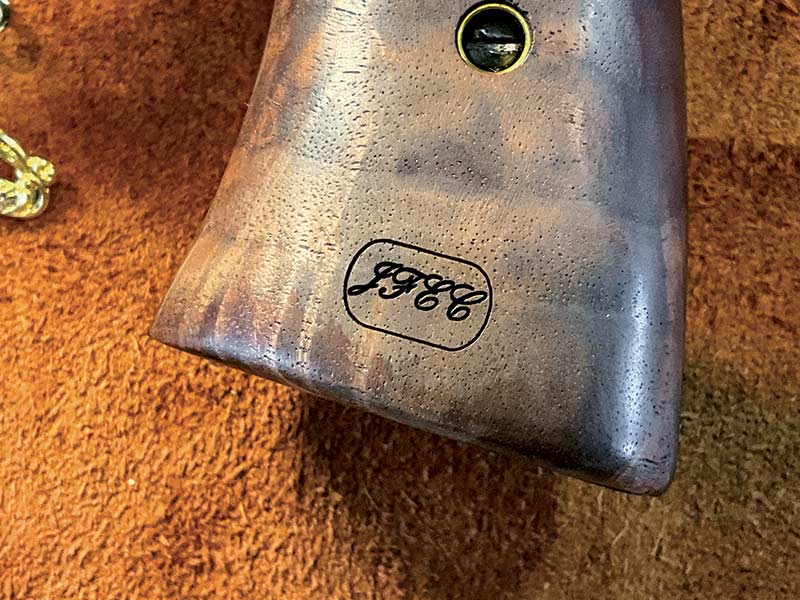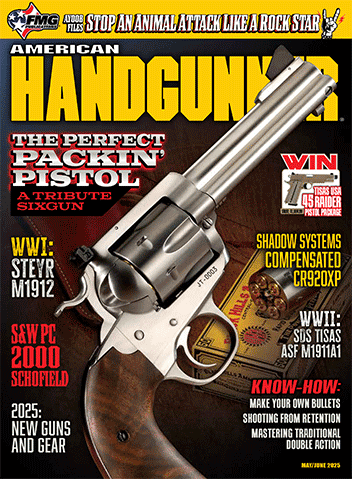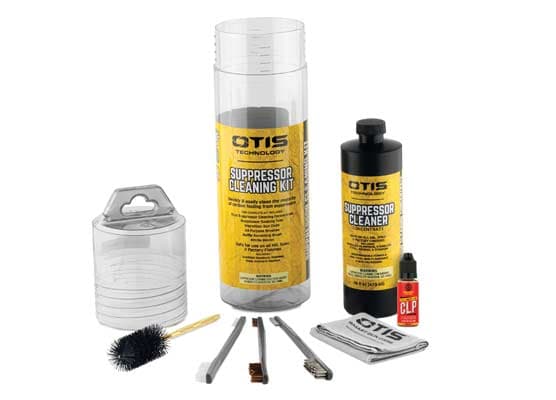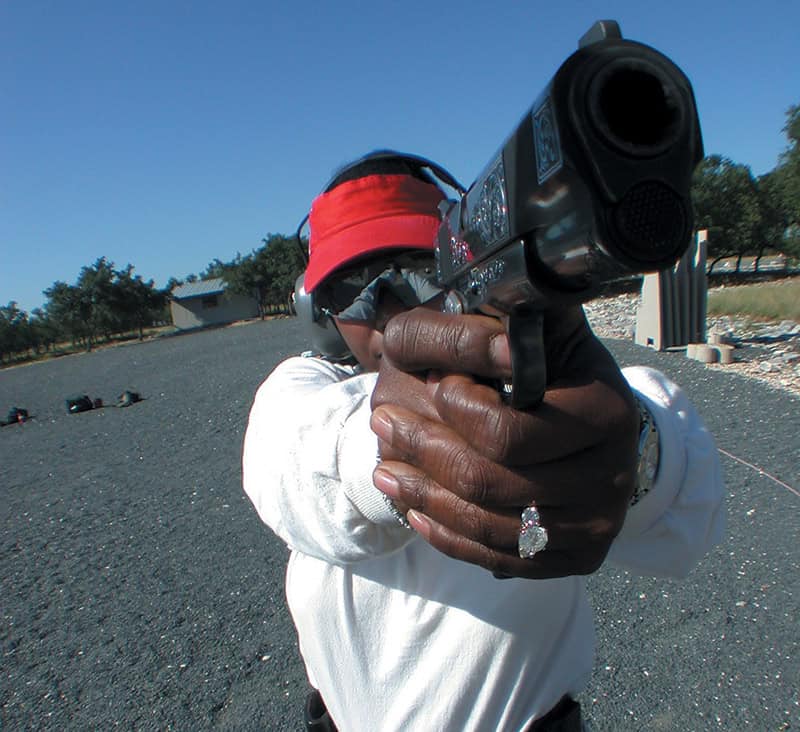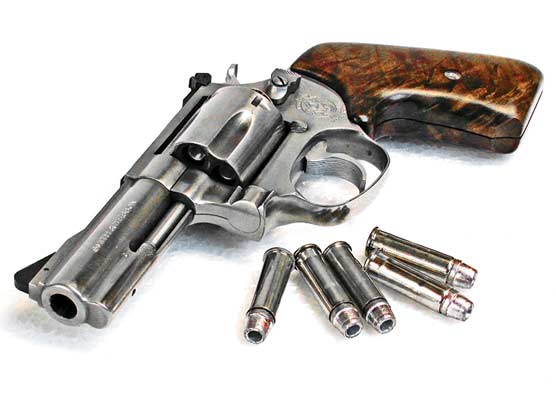The S&W Performance Center 2000 Schofield
History Reborn
The year 2000 brought many things. The blockbuster Gladiator had us rooting for a slave to defeat an emperor. The International Space Station received its first crew. We learned what a hanging chad was. At the 2000 SHOT Show, S&W stunned us with its re-introduction of the S&W Schofield revolver.
For Old West historians, the Schofield was a legend. Some even speculate the outcome of the Battle of The Little Bighorn would have been different had Custer and his Seventh Cavalry been armed with Schofields instead of the slower-loading Colt Single Action Army.
Most Western movie fans are familiar with the Colt Single Action Army (SAA), even if they don’t know it by name. The Colt SAA has been in more films and television series than any other gun, bar none. While accurate and reliable, its Achilles heel was the slow loading and unloading process. Each cartridge has to be ejected and loaded one at a time while slowly turning the cylinder. If the user rolls the cylinder too far and misses the open chamber, tough luck; the cylinder doesn’t roll backward, so it has to go around again. Almost all S&W revolvers at the time were break-top frames, and all cases were ejected at once for rapid unloading and loading. The weakness of the S&W was its complexity and hinged frame.
A Veteran Brainstorm
The Schofield was the brainchild of U.S. Army officer George W. Schofield, a veteran of many battles in the Civil War and the American West. While the U.S. Army had purchased 1,000 S&W American Model 3 revolvers and saw merit in their design, Schofield felt he could make improvements more suited for horse soldiers. The original version of the S&W American Model 3 break-top revolver required two hands to open and reload, the cylinder was challenging to remove for cleaning, and the extractor was overly complicated. Schofield’s modifications changed the frame latch, making it possible to do with one hand, reduced the complexity of the case extraction mechanisms, and made it easily cleaned. Schofield was granted patents for his designs, and the army demanded S&W implement the changes on their following orders.
But, there was one improvement S&W refused to make. The army wanted the revolver to accept the .45 Colt cartridge already used for the Colt SAA. S&W declined to alter their gun to receive the cartridge developed by their arch-competitor. The .45 Colt case had a minimal rim then, and S&W felt their ejector would not work reliably. Instead, they created their own cartridge, the .45 Smith & Wesson, which was slightly shorter and less powerful. The selling point was it could be used in the Colt SAA. The drawback was that the Colt cartridge could not be used in the Schofield.
Adoption … To A Point
Despite that flaw in judgment, S&W sold some 8,000 Schofield revolvers to the army. They were distributed to cavalry units on the western frontier, including Schofield’s 10th Cavalry. The 10th was home to the distinguished Buffalo Soldiers, a unit of African American soldiers who fought extensively in the Apache Wars.
Those that carried the Schofield considered them a superior weapon. Testing proved a soldier could fire and reload the Schofield seven times faster than the Colt! The article “The Custer Disaster, Defective Arms in Indian Warfare, The Useless Revolvers of the Seventh Cavalry” in the Sunday Herald and Weekly National Intelligencer on September 24th, 1876, criticized the Colt as nothing more than a club once their cartridges were fired!
The stage was set for S&W to take the lead if they would make one last change and convert to their competitor’s cartridge! Oh, the irony. Think how it would have changed history. All the heroes of the Saturday matinee would be holding a S&W Schofield revolver on the marquee posters. Audie Murphy, John Wayne, Clint Eastwood, and all the other Western stars would be using a Schofield to bring justice to frontier towns if only S&W hadn’t been so vain.
The inability to use standard ammunition led to some units receiving the wrong cartridges. This wasn’t a problem for those with the Colt, as the Schofield cartridge worked perfectly. The problem arose when units with Schofield revolvers received .45 Colt cartridges. The longer cartridges would not fit in the shorter S&W cylinders.
It took a few years, but the army decided they were done with this nonsense. They withdrew the Schofields from service, issued them to National Guard units, or sold them to jobbers.
Post Military Use
Of those sold, many made their way west into the holsters of frontiersmen and others into the ledgers of the Wells Fargo Express Company. Those sold to Wells Fargo had their barrels chopped to 5″ and were stamped with their property marks.
Many noted lawmen and criminals carried a Schofield. Among them were Jesse and Frank James, as well as Cole Younger. There was at least one at the infamous gunfight at the OK Corral, carried by Frank McLowery. Lawman Bill Tilghman reportedly carried one as well.
Due to their association with the Old West and their rarity, collectors highly prize the S&W Schofield. The rise of popularity in Cowboy Action Shooting in the 1980s drove the market on reproduction guns found in the Old West. The Schofield made the shortlist, and many accurate Italian-made reproductions are on the market. I believe it was that market that S&W looked at when they decided to reintroduce the Schofield in 2000.
The New Schofield
The run of modern S&W Schofields was just over 3,000. I often shoot CAS matches with Rick Mangel, a collector with an impressive cross-section of what was produced and has made a quarter-century quest to know all he can about their production. Rick interacted significantly with S&W historian Roy Jinks and compiled a mountain of information on the new Schofield. I know no one with more knowledge in this area, and I was privileged to have seen a small portion of Rick’s collection. His collection has brought some variations to light that many did not know were produced.
The S&W Performance Center produced the 2000 Model of the Schofield. At 10′ away, the new version looks identical to the original. Under closer inspection, the purist will become frustrated with the differences that are easy to spot.
The barrel and frame markings were roll-marked on the originals. On the 2000 version, the markings were laser engraved with “Schofield’s Pat. Apr. 22d 1873” on the right and .45 S&W on the left, with patent dates listed below. The butt has “US” and the serial number.
The lawyers got involved, and the modern Schofields have a floating firing pin to reduce the possibility of accidental discharge when dropped or mishandled. The grips on the first 125 Schofields sold at auction by S&W were made of cherry, but most are of black walnut.
All I inspected had the military inspection cartouche, JFEC, for Inspector J.F.E. Chamberlain, laser engraved on the grips. The inner clockwork also has been upgraded to modern standards. Despite the 21st-century upgrades, the guns are still a product of the S&W Performance Center, and the finish shows it. Jim Rae from the Performance Center stated the Schofield took five times the labor as modern designs due to the required hand finishing. I believe it. Each gun was so smoothly finished that I struggled to get photographs without reflections.
Variants
The variations reflect its use in history. Most shipped in the original military configuration with a 7″ barrel, blued cylinder and frame, color case hardened barrel latch, hammer, and trigger guard. Some shipped nickel-plated, perhaps in keeping with those sold on the secondary market.
The 5″ barrel version honors the use of the Schofield by Wells Fargo Express Company. They came in blued and nickel versions and had the color-case hardened components described before.
The original Schofields had a domed hammer stud. Of the more than one dozen Performance Center Schofields I examined, all but one had a flush hammer stud. The one example with a domed hammer stud was a special run of the WFS prefix Schofields with this feature. No explanation is known for this.
The pinned front sight is inscribed on all versions with 2000 Performance Center on the left and 1875 Mod. 3 Schofield on the right.
When word came out of the upcoming release of the Schofields, collectors and cowboy shooters lined up with fists of cash. Some had original Schofield revolvers and wanted to obtain the new offering with the same serial number, and others wanted an American-made reproduction for cowboy action shooting events. The suggested retail was around $1,500, but some went for more at auction.
The first 125 (GWS0001 – GWS0125) were sold in a special auction and had Cherrywood grips and a Cherrywood case. The serial number prefix GWS stood for George W. Schofield.
A unique series of 151 revolvers was offered to commemorate the sesquicentennial of S&W. Each had gold engravings of Horace Smith and Daniel B. Wesson and a banner proclaiming the dates and caliber. Each also came with a specially minted medallion and presentation case. Each revolver serial number had the prefix DBW for Daniel B. Wesson, followed by a year that S&W had been in business.
Other serial numbers can be confusing, but Rick’s research found they have meaning.
GWS stands for George W. Schofield. WFC stands for Wells Fargo & Company.
WFE stands for Wells Fargo Express, while WFS stands for Wells Fargo Schofield.
NKL stands for nickel plated, while NTM designates a limited run made for Nelson Tool and Machine, a subcontractor for the PC2000 Schofields.
Some series came in a wooden presentation box, while others came in a fancy golden cardboard box.
Does this make sense? Rick supplied a list of serial number variations and the number of revolvers produced under each:
After 25 years, the value of these revolvers varies depending on what remains of the original packaging, wear, and whether they have been fired. I see them offered intermittently in the cowboy action shooter forums and on firearm auction sites. While the Performance Center Schofields will never command the price as the originals, they are still beautiful and fun to shoot.
GWS series: 7″ Blue, GWS0001 – GWS2599 (2,599)
NKL series: 7″ Nickel, NKL0000 – NKL0121 (122)
NTM series: 7″ Blue, NTM0001 – NTM0006 (6)
DBW series: 7″ Blue, with wooden case,
DBW1852 – DBW2002 (151)
WFE series: 5″ Blue, cardboard box,
WFE000 – WFE0151 (152)
WFS series: Mixed barrel lengths/finish with
wooden case, WFS0001–WFS0072 (72)
WFC series: 5″ Nickel cardboard box,
WFC000 – WFC0106 (107)

